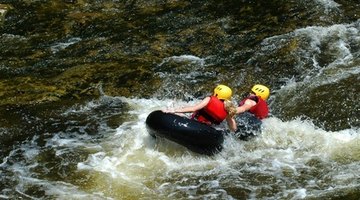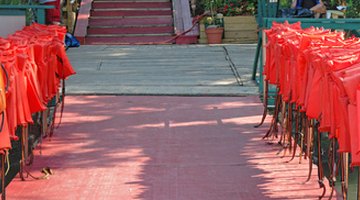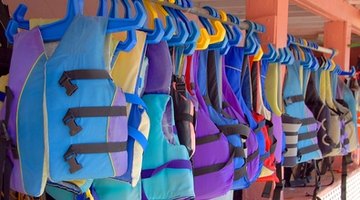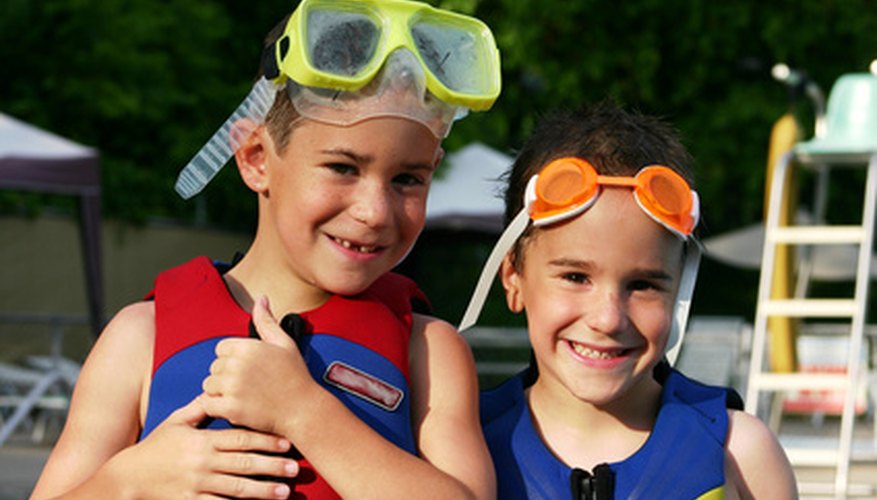Life jackets are an integral component of water sports safety. The U.S. Coast Guard requires recreational boaters to have one PFD -- personal flotation device -- for every person on board, and children under age 13 must wear their PFDs at all times when on the boat. Of the five types of PFD, types I, II, and III are what most people think of as a life jacket. These PFDs actually look like, and are put on, like a regular jacket. The only difference is that they have straps which must be securely fastened. Type IV PFDs are items that are thrown to someone to float on during a rescue, like life rings. Type V PFDs are limited-use devices with limited buoyancy, like specialised work vests.
- Life jackets are an integral component of water sports safety.
- Of the five types of PFD, types I, II, and III are what most people think of as a life jacket.

Buy the right jacket. Type I jackets are for offshore activities. They are the most buoyant and will turn most wearers face up if they become unconscious. Type II jackets are for near-shore activities in calm water. Some of them will keep an unconscious person face up in the water. Type III jackets are also called flotation aids. They are the least buoyant and usually will not keep you face up if you become unconscious. They are for near shore activities with the chance of swift rescues. Type V jackets are special-use work vests and hybrid jackets. They are the least buoyant of the jacket-type PFDs, and usually will not keep you face up. Inflatable life jackets are categorised as Type III or Type V.
- Type I jackets are for offshore activities.
- Type II jackets are for near-shore activities in calm water.

Put the jacket on. Most PFDs are put on like a regular jacket or vest. Slip your arms through the armholes, with the jacket opening in the front. A few life jackets slip over your head, with two thick pads in the front and a thick pad that looks like a narrow pillow that goes behind your head.
- Most PFDs are put on like a regular jacket or vest.
- A few life jackets slip over your head, with two thick pads in the front and a thick pad that looks like a narrow pillow that goes behind your head.

Fasten the jacket. Most life jackets will have at least one, and perhaps as many as three, straps that go around your torso. Do not let the straps twist as you pass them around your torso and clip the buckles together. If your jacket has a front zipper instead of straps, simply zip it up.

Check the fit. The straps should be snug, but not tight enough to be uncomfortable. The jacket should fit snugly and should not ride up or cover the face. If your jacket does ride up or cover your face, it is too large. Your chin or ears should not slip through the neck opening when floating in the vest.
TIP
If you store PFDs from year to year, check them for buoyancy and damage when you take them out of storage. Make sure that your PFD has the right weight limits for you.
WARNING
Failure to wear a life jacket puts your life at risk. The U.S. Coast Guard estimates that 80 per cent of boating fatalities could have been prevented by proper life jacket use. Adult jackets will not work for children. Do not store life jackets in direct sunlight, as UV radiation can damage them.
